I understand there are still people out there who deny human-induced climate change. Perhaps those people have never had to personally experience increasingly erratic climate patterns. I, however, am still a California boy, in spite of not living in...
I understand there are still people out there who deny human-induced climate change. Perhaps those people have never had to personally experience increasingly erratic climate patterns. I, however, am still a California boy, in spite of not living in that state for four decades now, and I still keep track of the weather there. There seems to be two kinds of California weather these years: those with half the normal rain and historic wildfires, and those with 50% more rain than normal, and historic flooding. Last winter was a historic flooding winter.
And now, in my long-term home of Michoacán, Mexico, we have experienced a one-year drought unlike anything I have seen in my 30 years here. I have often seen the western half of our large Lake Cuitzeo dry up in early or late spring, just before our summer rainy season. Three years ago, the entire lake essentially dried up from January through May. But this year, 2023, something most extraordinary happened: The lake mostly dried up at what should be its wettest time. Here is a photo of me, standing one kilometer from its “shore”, at the very end of August. (We should have had more rain in September, but that month was almost completely dry.)
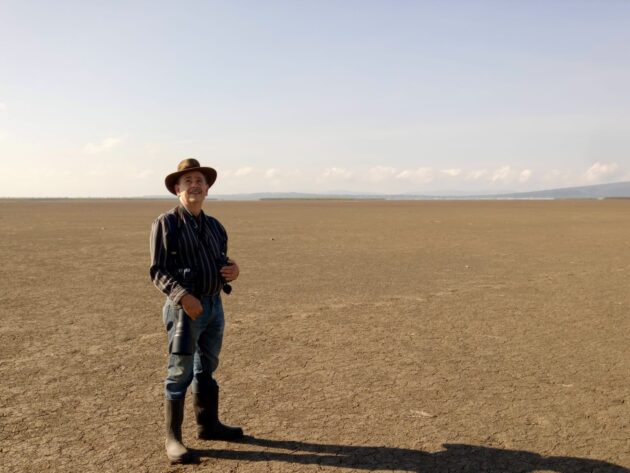
Now, this has some major importance for migratory waterfowl and shorebirds. The former should number at least a hundred thousand individuals each winter, while the latter should be present in the tens of thousands. So when there is no Lake Cuitzeo on which to winter, where do all these birds go?
Our 2020 drought taught me that any body of water, no matter how small, might host these “drought refugees” in dry years. Last week’s drop-in on a small pond near our church certainly strengthened this hypothesis, when we discovered a most-unexpected vagrant Hooded Merganser on a most-unexpected pond.
Still, I was nervous when I pushed a collection of highly-qualified friends (four ornithologists and a botany professor) to accompany me to the small San José de las Torres reservoir, just above the city of Morelia. After all, on a normal year this body of water only offers a good number of American Coots, a handful of hybrid, semi-domestic ducks, a few Pied-billed Grebes, Cattle, Snowy and Great Egrets, a Great Blue Heron or two, and perhaps a few Spotted Sandpipers and Killdeer. For Michoacán in the winter, this does not exactly represent a thriving and diversified wetland. But another local biologist had reported a hyper-endemic Black-polled Yellowthroat there, and I wanted to find out whether it was still there, so push I did.
It didn’t take long to calm my nerves. As soon as we had parked beside the lake, we saw a wide variety of migratory ducks: Canvasbacks, Gadwalls, Blue-winged Teals, American Wigeons, and even a pair of Redheads. Mexican Ducks were also present; these are residents in the area, but not normally on this body of water. Not bad, for a reservoir that normally does not host any wild ducks.
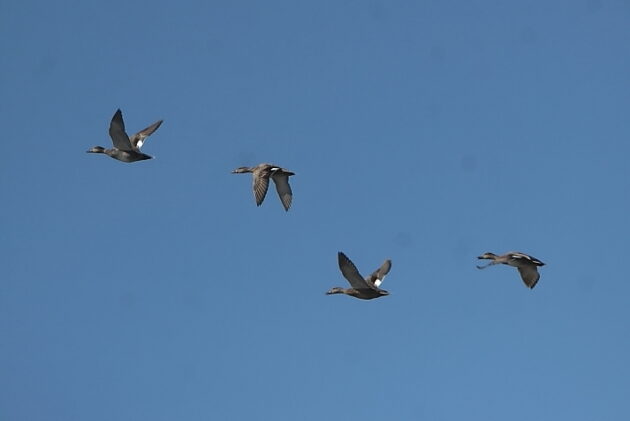
Gadwalls flew overhead
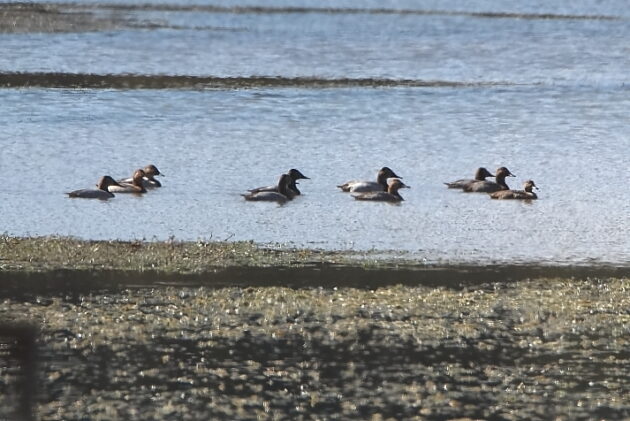
The Canvasbacks stayed on the water.
The shorebirds were a bit less surprising, with at first only a Greater Yellowlegs, a Green Heron, and one White-faced Ibis joining the usual suspects. But then… Oh look! Two Ospreys flew overhead, turning up again and again to fish on this small body of water. I can often go for as much as three years without seeing an Osprey in Michoacán, and have never seen any by Lake Cuitzeo. But here they were, above only a few hectares/acres of water. And they were clearly fishing, with some success.
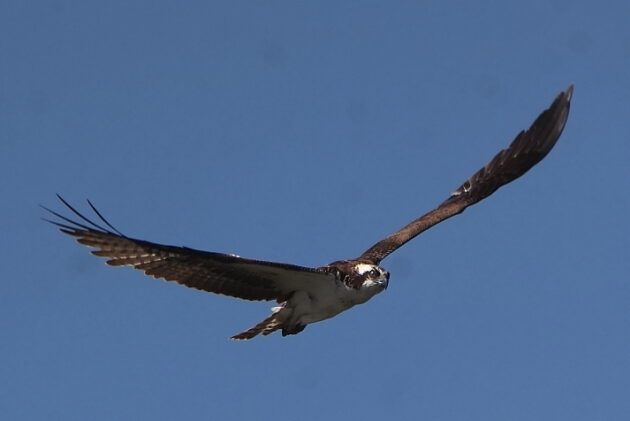
There were plenty of other birds in the area, with 72 species around the reservoir for the day. A Merlin joined our more common American Kestrel and Cooper’s Hawk. A Belted Kingfisher joined the ranks of the drought refugees. And the Black-polled Yellowthroat? None of us saw it early that morning. But after some time spent birding in nearby pine-oak forests, bringing our total for the day to 94 species, a few other great species did show up, on our trip back to our cars.
First, the Yellowthroat turned up. In fact, we saw at least two. This is a big deal, as this species is traditionally only seen in three places: on the shores of Lakes Pátzcuaro and Cuitzeo in Michoacán, and the Lerma Marsh in Mexico State. I found myself wondering if this historic drought might force the species to move into some new habitats, actually decreasing its population’s vulnerable state.
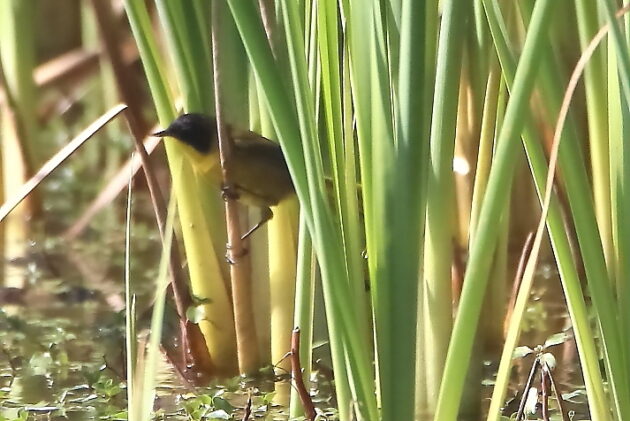
If you know your Common Yellowthroats (which we also saw), there is no doubt that this all-black cap belong to a Black-polled Yellowthroat.
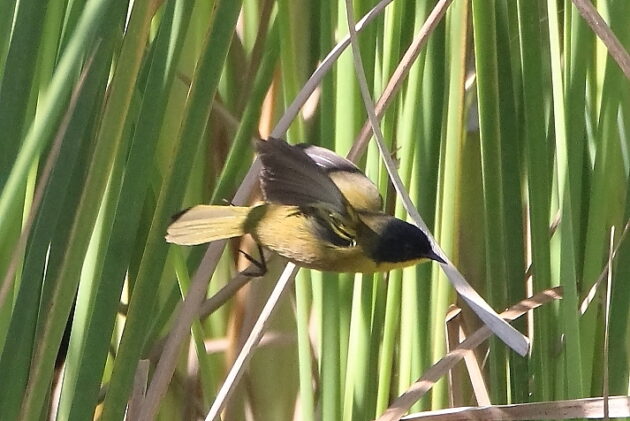
And then I spotted an unusual heron. The Least Bittern is never an easy find. And that this one should choose to spend at least 20 minutes far from the reeds that usually hide it was a new experience for all of us.
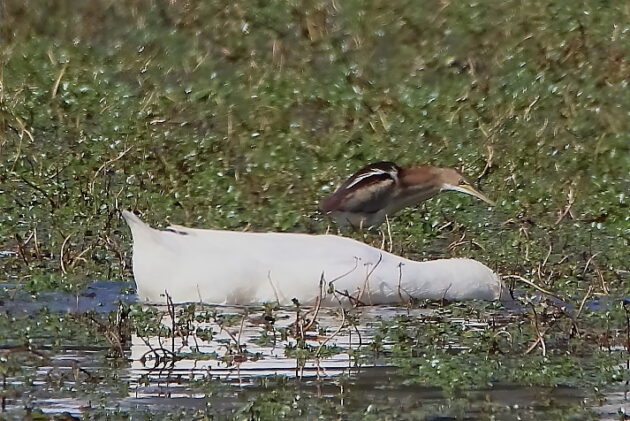
It was odd to see a high-quality species like a Least Bittern next to an entirely domestic duck.
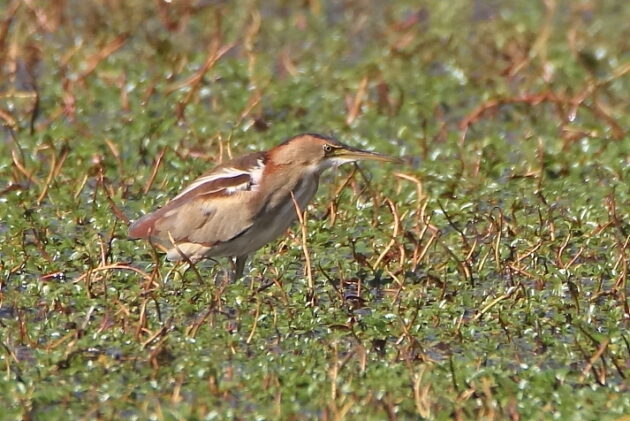
We had noticed Sapsucker holes on the tree under which we had parked, and indeed, a Yellow-bellied Sapsucker was our final cherry on the day’s sundae.
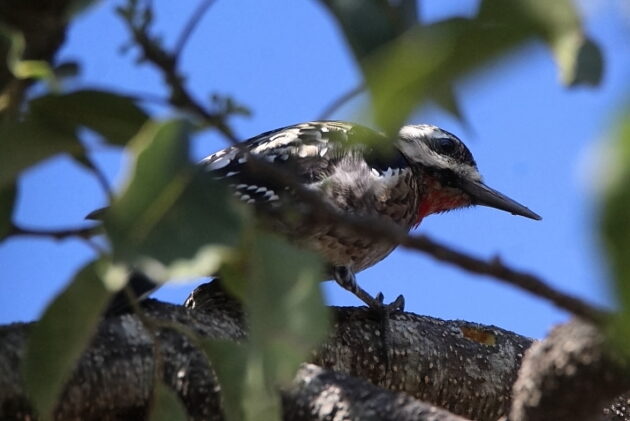
I’ll end with an update on our vagrant Hooded Merganser — and her friends. She was still on that pond the Thursday following our initial Sunday sighting, as well as the following Sunday. Two days later, she was not seen there. But now there have also been one or two Canvasbacks on the pond, and this Tuesday a Wilson’s Snipe also turned up, most unusually in a shoreline that is made up of subtropical thorn forest, rather than that bird’s usual marshland. Also, both eBird and Wikipedia state that Canvasbacks “winter on any large body of water”. Our Canvasbacks seemed confused about the definition of the word “large”.
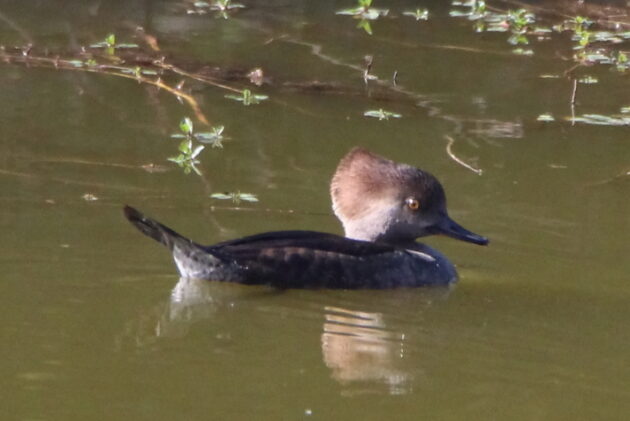
.
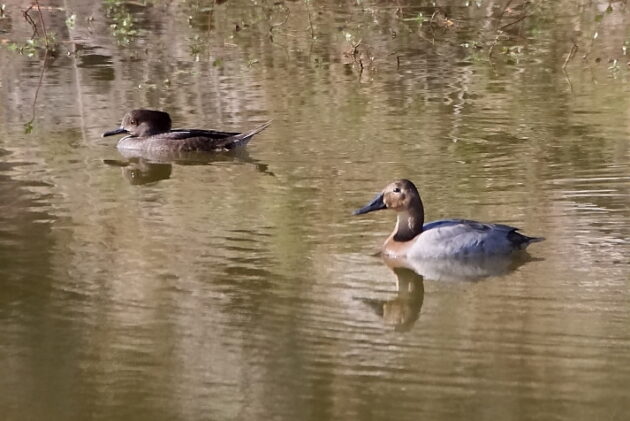
.
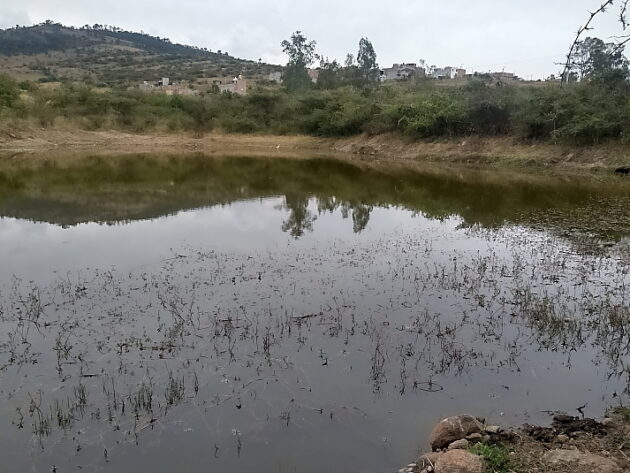
Most certainly not a “large body of water”.
The post A World Turned Upside Down first appeared on 10,000 Birds.


